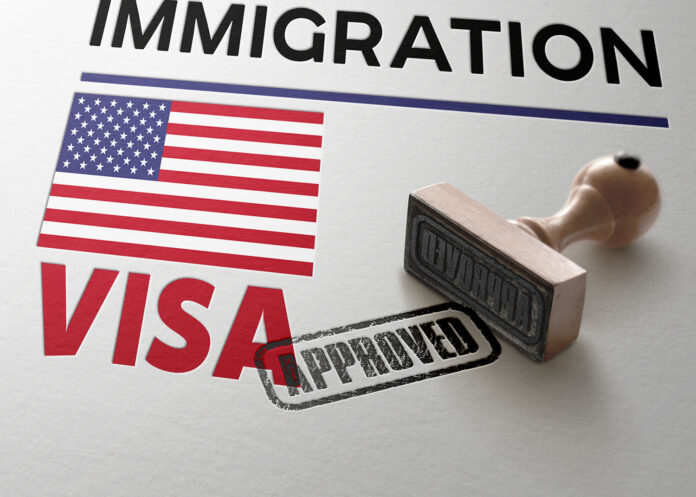BY JR STRAUSS.
A few months ago, I found myself sitting with a handful of other lawyers in a windowless conference room deep within the bowels of New York’s JFK airport. We were listening to a series of presentations given by several stern looking Customs and Border Protection (“CBP”) officials. The purpose of the meeting was to review recent developments and to strengthen ties between CBP and immigration practitioners in New York and beyond. Facts were shared, comments were made, and arguments were (mostly) avoided. Two things occurred to me during that session. The first was that U.S. immigration law, already notoriously labyrinthine and frequently contradictory even for attorneys, must be particularly confounding for international visitors being fed through the grinder of customs, many of them still groggy from an hours long flight. The second was: how many pipers have to deal with this mess?
•JR Strauss is a long-time piper and an immigration attorney based in Brooklyn, New York.
The purpose of this article is to give pipers, drummers, and other traditional musicians from outside the U.S. an overview of our immigration system, what to expect if they plan on traveling here, and what to watch out for. As competitions, workshops, and performance venues begin to reopen, musicians coming to the U.S. need to be careful to abide by the relevant law, as what may seem like a simple error or harmless omission can have major consequences down the road. (Note: While I like giving unsolicited advice as much as the next piper, I can only comment on immigration law in the U.S. For info on the UK, EU/Schengen area, or anywhere else in the world, contact an attorney/solicitor.)

Before we go much further, some basic terminology will be helpful. First, a “visa” is an official document that allows entry for a specific purpose, such as work or study. It’s typically in the form of a stamp or “foil” that is placed in a passport and looks like an ID. The visas discussed in this article are non-immigrant visas, and cover short term trips to the U.S. These are very different from immigrant visas, which authorize long term or permanent residency and are the first step on the path to citizenship. The agency that oversees the immigration and nationality system in the U.S. is United States Citizenship and Immigration Services, or “USCIS.” Customs and Border Protection (“CBP”) and Immigration and Customs Enforcements (“ICE”) are law enforcement agencies that are, as their names imply, responsible for guarding the border and enforcing customs and immigration law.
With the lingo out of the way, let’s focus on a few of the most common non-immigrant visas. First, there are the visitor visas, which are classified as B1 and B2 and are issued by a U.S. consulate. The B2 is for tourism, while the B1 allows for limited business-related activities, such as attending meetings or negotiating contracts. Neither allow for employment or work outside of a few very specific contexts. For some people, a B visa stamp may not be necessary. For example, if you are from one of the 40 countries that are part of the Visa Waiver Program, such as the UK, Ireland, most of continental Europe, Australia, and Japan, you can use the Electronic System for Travel Authorization – “ESTA” – to travel. It’s very important to note, however, that the rules that govern what can and cannot be done while on a B1/B2 visa also apply to ESTA, so I’ll refer to this family of tourist/traveler visas as “B/ESTA” for ease of classification (and because I like how it sounds).
After the visitor visas, there are the employment based visas. The most common are the H (skilled worker), E (investor), L (intracompany manager or specialist) and the O (extraordinary ability) and P (certain athletes/performers). Of the five, I’ll only cover the O and P, as those apply to pipers and other musicians. These visas also require a trip to a U.S. consulate, which will hopefully approve and issue the visa stamp itself. (Canadians, who are visa exempt, can usually skip this step – it’s a small benefit for putting up with their southern neighbors.) Due to the processing backlogs that plague most consular posts around the world in the wake of COVID, this step can often add months to the process. Given these delays, anyone considering an employment based visa should start planning sooner rather than later. I have included at the bottom of this article for those looking for more info.
A question that frequently comes up with the musicians I work with is if or when they need a specific employment visa rather than the B/ESTA. For the majority of professional musicians, it’s safest to start from the assumption that an O or P visa will be required. As mentioned above, there are some limited exceptions under the rules that may apply to pipers and other folk musicians. For example, professionals entering solely to compete in musical competitions can use the B/ESTA, as can individuals participating in cultural programs sponsored by the traveler’s home government. There are also a few very limited showcases where pipers can perform for potential employers as opposed to an audience that’s there to be entertained (such as annual conferences and events organized by Folk Alliance International or The Association of Performing Arts Professionals). Musicians may also receive an honorarium payment for serving as guest teachers or performers for qualified academic institutions for a period of time not to exceed nine days for any one entity, with no more than five such engagements in a six-month period. It’s important to keep in mind that the exceptions are very narrowly interpreted. The analysis as to whether or not an activity is employment and will require a visa is less about payment and more about the possibility that it will take work away from American musicians. Trying to get around the rules by calling a performance “promotional” or voluntary will not remove the need for an appropriate employment visa.
Because the rules are not well defined or just hard to understand (if they can be found in the first place), traditional musicians may violate them without even realizing it. Many players in the trad and folk scenes tend to be soloists or members of small groups and don’t usually have the legal and logistical support of a major label or large tour management to advise them of the visa requirements. Another issue is that some of the very best pipers have a day job and may not consider themselves “professional” beyond the bounds of piping competitions. For these infrequent flyers, an employment visa is the last thing they’re thinking about. Unfortunately, UCIS or CBP may have a very different idea. When it comes to immigration, it doesn’t matter if someone is entering to headline a 50-city tour, record an album, or play a quick gig in the back of a pub – the right visa is required. In days gone by, a fiddler or a piper may have unadvisedly entered as a tourist, played a few shows, and slipped out without immigration becoming any the wiser. Thanks to social media, digital publishing, and government data mining, those days are gone; a potentially problematic performance or engagement can live online for years and can come up if an official decides to do a little googling. Violating the rules can lead to loss of ESTA, visa cancellation, inadmissibility, and potentially worse depending on the nature of the alleged misrepresentation.
Fortunately, it’s not all doom and gloom. As mentioned above, there are two visa categories that can allow pipers and trad musicians to work in U.S.– the O and the P. The O-1 is reserved for individuals with “extraordinary ability,” while the P is for ensembles and certain individual performers. Unlike ESTA or the B visa, these visas must be first approved through a petition submitted to USCIS. Upon approval, beneficiaries can then move on to the consulate to request their visa stamp (unless they happen to be one of those lucky Canadians). Of the two, the O-1 tends to be the most challenging, although it allows for a longer approval period of 36 months compared to the P’s 12 and is potentially more flexible. Applicants (called “beneficiaries”) must be represented by a “petitioner,” or a U.S. based entity that represents them before the government. To be approved for an O, a beneficiary must submit evidence of a major national or international award or documentation that satisfies at least 3 of 6 regulatory criteria, such as proof of starring participation in distinguished productions or events or evidence of national or international recognition as established by articles by or about the beneficiary in major media or trade publications. A letter from a labor union or peer group is typically required, as is proof of employment in the U.S. The P visa, on the other hand, is less onerous, although shares the need for a petitioner, peer letter, and confirmed employment. Different subcategories of the P also have their own requirements, such as coming to the U.S. to perform as a member of a group that has a sustained reputation for being “recognized internationally as outstanding” (the P1B) or individuals participating in a program that is “culturally unique” like a piping school or related program (the P3). In addition, both the O & P visas have subcategories for dependent family members as well as “essential support” staff like tour managers or technical crew.
Musicians who are contemplating taking on work in the U.S. shouldn’t be intimidated by phrases like “extraordinary ability” or “culturally unique.” For example, established pipers, particularly those with a history of wins at major contests or well-reviewed albums under their kilt belts, may qualify for an O-1 or a P-3, while an established trad group might want to look into a P-1B. At the same time, musicians who do not meet the standard should not take that as an invitation to try their luck and work without authorization. When things go bad with the immigration process, they go very bad, very quickly.
Naturally, one question that comes up is “how much will this cost?” At time of writing, the standard USCIS filing fee for an O or P petition is $460, plus $2500 if an expedited response is requested. Os and Ps also need consultation letters from a union with jurisdiction (usually the American Federation of Musicians), which adds at least $250. There are also visa processing fees assessed by the consulates, which range from $160 for B visas to $190 for other employment based visas like the O and P. While ESTA circumvents the need to deal directly with a consulate, even it carries a $21 processing fee. It is important to remember that these numbers are only what the government charges, and legal fees for preparing a petition, which can be significant, will add to the costs. Prospective workers from abroad or their potential employers will need to weigh the cost of a visa and the underlying process against the value of the work to be completed. In some cases, a single performance may not justify the expense. However, the cost of trying to untangle the legal knot that will result if a traveler is found to have violated the immigration regulations may be significantly higher, so care should be taken when making plans to come to the U.S. to work or perform. Speaking with a lawyer or arts organization with experience in immigration matters is the first place to start, as there may be ways to maximize the utility of a particular visa, not to mention the potential to learn about pro bono or grant options for qualified musicians.
The world is finally re-opening, and I think I can speak for other pipers and traditional music lovers in the U.S. when I say that I’m relieved that global acts are finally coming back to our stages. And as the level of playing continues to develop in the U.S, there is a renewed need for experienced musicians from abroad who want to share their talent and build new connections. While the immigration system can be tricky, there are ways to avoid trouble and, for many pipers and folk musicians, options for legal employment and residence.
Helpful Links
Artists from Abroad (https://www.artistsfromabroad.org/): A very good overview of the immigration landscape with a particular focus on the arts.
Tamizdat (https://www.tamizdat.org/): A nonprofit that works with artists on immigration issues and can, in some cases, help find pro bono or low-cost visa options.
Volunteer Lawyers for the Arts New York (https://vlany.org/): A legal aid organization that can connect volunteer lawyers to potential clients in a range of areas.
About the author: JR Strauss is a long-time piper and an immigration attorney based in Brooklyn, New York.













